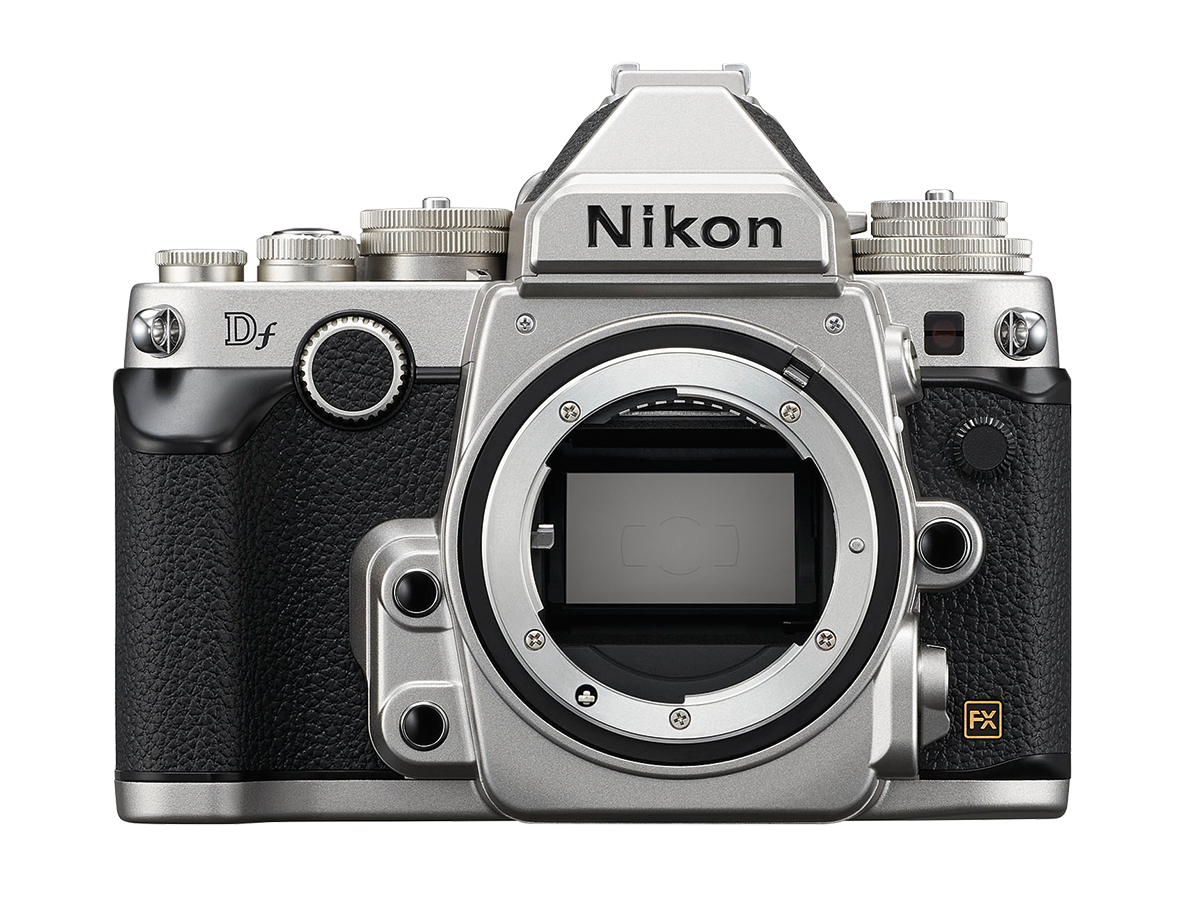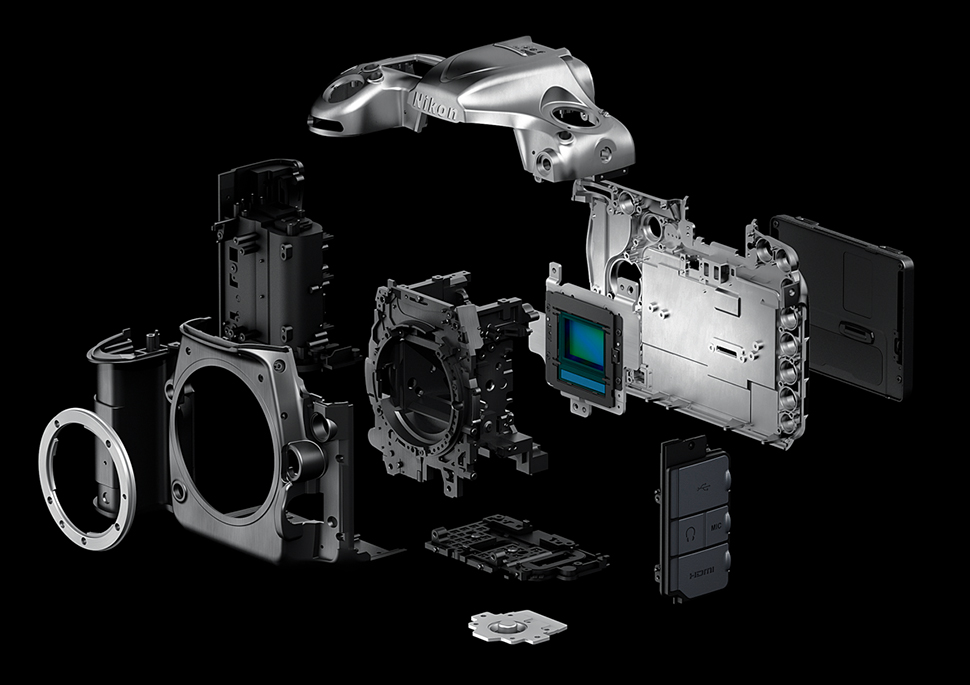Why the F-mount has stood the test of time

The F-mount celebrated its 50th anniversary in 2009, making it the longest-running lens mount for 35mm SLR interchangeable lens cameras in the world.
The F-mount was introduced on the Nikon F in 1959 and it’s been a constant throughout Nikon’s history, providing a substantial amount of backwards and forwards compatibility between lenses and cameras over the past five decades.
Nikon decided that it needed to provide a degree of future-proofing and enable the use of larger aperture lenses. The result? The F-mount diameter of 44mm.
But the F-mount hasn’t stayed frozen in time, and there have been some notable evolutions. For instance, 1977 saw the introduction of auto aperture indexing (Ai). Ai-type lenses enable the automatic setting of maximum aperture.
In 1983, the F-mount had to accommodate both autofocus and the exchange of aperture information between the lens and camera using central processing units.
Is it compatible?
Although you can physically attach F-mount lenses from the ’60s to the latest Nikon digital SLRs – and vice versa – it’s not quite interchangeable lens nirvana, as there are a number of caveats and limitations to take into account.
Get the Digital Camera World Newsletter
The best camera deals, reviews, product advice, and unmissable photography news, direct to your inbox!
For a kick-off, Nikon’s non-Ai lenses may need to be modified to prevent mechanical damage when they’re attached to later bodies. Although DSLRs can accept Ai lenses, only high-end bodies will meter through the lens.
In addition, some digital SLRs don’t have a built-in focusing motor, so can only autofocus when a lens with a built-in motor – AF-S or AF-P – is attached.
And then there’s Nikon’s range of G lenses, which lack an aperture ring and are intended to work with digital SLRs where the aperture is adjusted using the camera’s command dial. This is not an exhaustive list!
Most F-mount lenses are designed to project an image that covers a frame of 35mm film, or an FX imaging sensor, which has the same 36x24mm proportions. Nikon’s DX cameras have sensors that are 1.5x smaller – approximately 24x16mm – but they retain the same F-mount.
This means you can happily use ‘full-frame’ lenses on DX bodies, albeit it with the image cropped. Nikon’s smaller DX lenses can also be fitted on FX bodies, with the camera automatically cropping the image frame to DX size.
Branding the build
How do you distinguish a new camera from the rest of the pack when the raw specs may be similar, in the race for digital SLR one-upmanship? Twenty-something million pixels? Of course! Multiple cross-type AF points? Check. ISO north of one million? You’d better believe it.
So Nikon’s marketing team must have been high-fiving all the way to their whiteboards when the engineering department came up with the idea of using ‘Sereebo’ in the construction of the D750.
Instead of an all-magnesium alloy body, the front body and front cover are made from a carbon-fibre reinforced thermoplastic used in a ‘monocoque structure’ (another high five).
Monocoque is a method of construction that relies on a structural skin, rather than a chassis, for its strength, with the camera’s exterior panels serving as a frame that protects the internal structure, in addition to shaving a little off the weight.
Sereebo was actually first used in the structural parts of the D5300, released
in 2013 – in fact, it was the first time the plastic had been adopted in a commercial product.
Since then, it’s become a familiar selling point for updated Nikon bodies, with ‘a monocoque carbon-reinforced shell’ (high five!) being used in the likes of the D5400, D5600 and D7500. In fact, even the D500 flagship DX body uses a blend of magnesium alloy at the top and rear and carbon fibre at the front (below).

Shutter nutters
Aside from the camera body, the biggest stresses in a DSLR occur within the mirror assembly and shutter. Nikon has again led the way here, with the shutter foil in the original Nikon F SLR being made of titanium (0.02mm in thickness) for the first time in the world. The shutter and quick return of the mirror were reportedly put through a 100,000-cycle stress test to ensure reliability.

These days, the shutter blades of high-end Nikon DSLRs are made from Kevlar/carbon-fibre composite and tested to ensure they have the durability to cope with the increased load that comes from the machine-gun frame rates and prodigious buffers that professionals demand.
According to Nikon, the D5 has been tested to 400,000 cycles, with the shutter unit loaded into a fully assembled camera. The flagship FX body also includes a self-diagnostic shutter monitor that detects any difference between the shutter speed and the actual speed of the blades, and minimises this accordingly.

5 things Nikon has given the world of sport
Nikon Professional Services (NPS)
NPS provides field support at major events around the world, including the Olympic Games, FIFA World Cup, Wimbledon and F1 Grand Prix. NPS members can get their gear serviced and pick up loan equipment so that they don’t miss a moment.
Nikon D5
While the D3 was the digital SLR that redefined expectations of what a sports camera could be, the D5 has pushed the boundaries still further. The stats are impressive: a new 153-point AF system, 12 fps continuous shooting and an image buffer good for 200 NEF files in one 16.7 second burst. Game, set and match, Nikon.
Sponsorship
For many years Nikon has been supporting sporting competitions, including the Asian Football Confederation (AFC) and the FINA World Championships (for aquatics sports). In the UK, Nikon has been the official patron of golf’s Open Championship since 1993.
Sport VR
Introduced in the 400mm f/2.8E FL ED VR, Sport VR mode is a less intense version of Vibration Reduction designed to produce a smooth viewfinder image when panning, and to make it easier to track movement.
Lighter super-teles
In 2015, lighter replacements for its sports lenses arrived. The 500mm f/4E and 600mm f/4E are 790g and 1250g lighter than their predecessors through the use of magnesium alloy and fluorite elements.
N-Photo: The Nikon Magazine is a monthly publication that's entirely dedicated to Nikon users. As a 100% independent magazine, you can be assured of unbiased opinion from a trustworthy team of devoted photography experts including editor Adam Waring and Deputy Editor Mike Harris.
Aimed at all users, from camera newcomers to working pros, every issue is packed with practical, Nikon-specific advice for taking better photos, in-depth reviews of Nikon-compatible gear, and inspiring projects and exciting video lessons for mastering camera, lens and Photoshop techniques.
Written by Nikon users for Nikon users, N-Photo is your one-stop shop for everything to do with cameras, lenses, tripods, bags, tips, tricks and techniques to get the most out of your photography.

